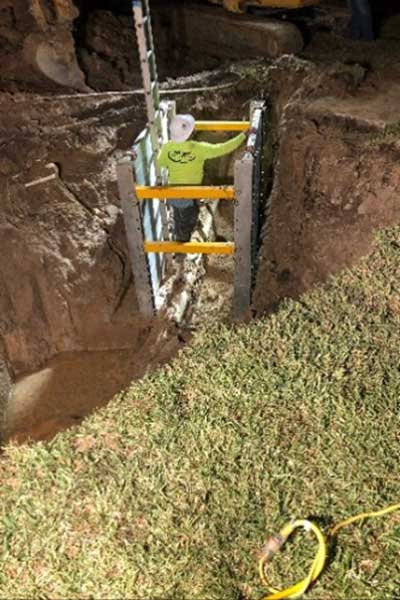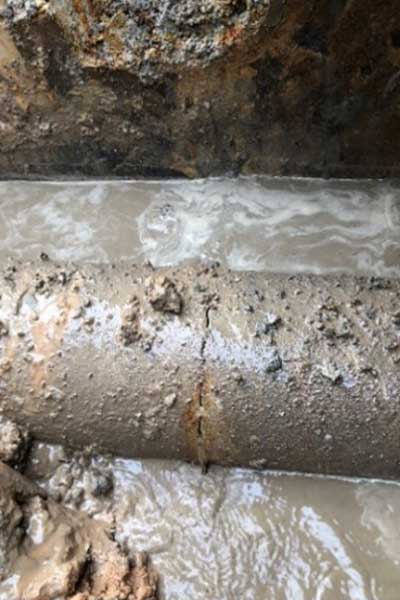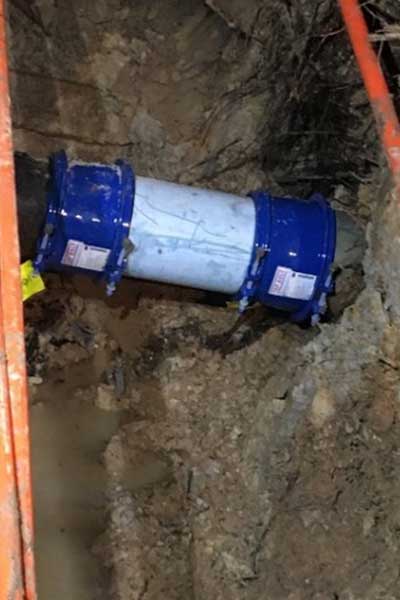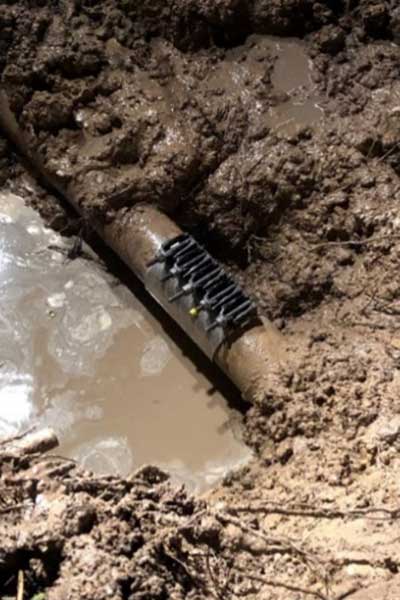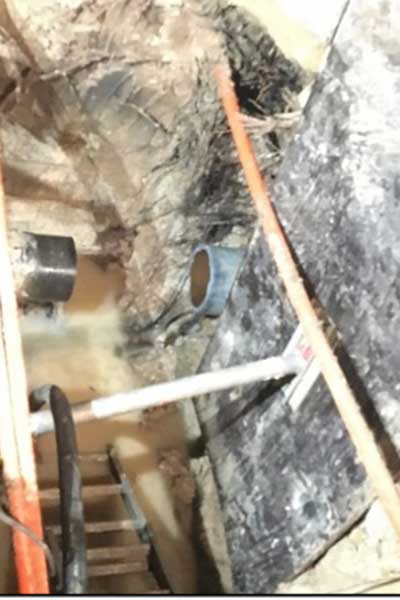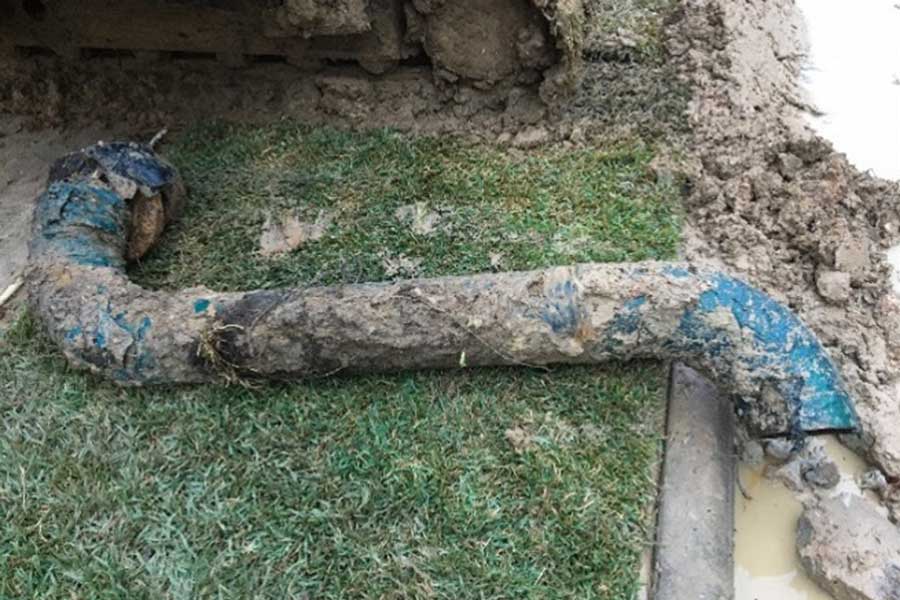Latest News
Spring is in the Air
With the arrival of spring, it’s time once again to restore our yards to the lush, green spaces they once were. As you restart your sprinkler system after the winter shutdown, be sure to walk your sprinkler lines to check that all heads are functioning properly. This simple step helps prevent water waste and ensures your lawn gets the hydration it needs. Ideally, this should be done at least once a season, if not monthly. If you have a lawn service and your system runs overnight, you may not even notice a broken sprinkler head, which could lead to excessive water waste and higher costs. Remember, water rates continue to rise, largely due to charges passed on from the West Harris County Regional Water Authority (WHCRWA).
Did you know that Texas A&M recommends against daily watering? Overwatering not only leads to higher usage and expensive bills, but also creates a soggy, unhealthy lawn. Instead, apply approximately half an inch of water per session, allowing the soil to fully absorb it before drying out for a day or two. This approach promotes deep root growth, making your turf more resilient while conserving water and reducing costs.
Take Control of Your Water Usage & Receive a $10 Credit
As a resident of M.U.D. No. 208, you have access to a smart meter that allows you to monitor your daily water usage through a personalized web portal. With this tool, the EyeOnWater app, you can track how much water your sprinklers use and detect potential leaks. Unfortunately, many residents are not taking advantage of this FREE tool. This App also allows the user to set up text or email alerts for unusual spikes in usage, helping you spot leaks and resolve issues before they escalate.
Now, for a limited time, new first-time users will receive a one-time $10 credit on their water bill when they sign up for the Eye on Water app.
With the app’s leak alert feature, if water is flowing continuously for 24 hours at a customer specified rate, say 1 gallon per hour, the customer is notified by a text and/or email that their household has a leak. For example, the first graph below shows usage did not reach the set threshold line every hour so no alert is sent. In the second graph, usage exceeded the set threshold line every hour for 24 hours so an alert is sent.

Once a 24-hour period goes by with water flow less than the specified value, an alert is sent that the leak has stopped.
The EyeOnWater app lets you be in control. How’s that you ask? It allows you to engage with how you use water and see your latest water usage, understand how much water you use, detect leaks and discover when you use the most water. It also lets you:
- Quickly View your recent water usage with a two-week comparison.
- View detailed water usage history by day, week, month, and year.
- Discover your short and long term water usage trends
- Monitor your water usage, even when you are away from your home!
Plus, you can easily contact us! This is all simply at your fingertips and part of our service with the smart meters!
There are several ways to sign up for EyeOnWater. You can click on this link Smart Meter Account Sign Up which will send you to the smart water meter webpage on this website. Another way to sign up is with your smart phone. Scan this QR code below to be directed to the EyeOnWater website or find EyeOnWater in the app store.

No matter how you sign up, you will need the following information to register your account:
- Your zip code
- 10-digit account number shown on your water bill – Example: 53208-XXXXX
- E-mail address (your e-mail address will not be sold or distributed)
Start taking control of your water usage – sign-up now!
Report Emergencies Promptly
Have you ever been driving down the street or out and about on a walk and see water coming out of a water meter or perhaps flowing out under a sidewalk? Prompt reporting is crucial to address potential emergencies swiftly.
M.U.D. No. 208 urges residents to report water or sanitary sewage emergencies promptly to our operator H2O Consulting by calling (281) 200-3388, available around the clock. Your swift action aids in timely repairs, preventing property damage and conserving our precious water resources. Please keep in mind every situation is different and in some cases a repair team will be dispatched immediately, while in other cases it may take a few days for repairs to be made.
When reporting, they’ll assess whether the leak originates from the districts’ infrastructure or within homeowners yard or residence. It’s essential for residents to locate their shutoff valves and understand the procedure for emergency shut-offs, ensuring swift containment of any leaks. Shut off valves can be located inside or outside the home or possibly in the garage.
What is the WHCRWA Fee on My Water Bill?
The monthly water bill has 3 components, the Base Water Charge (District’s water rates), the Base Sewer Charge (District’s sewer rate) and the WHCRWA Charge (West Harris County Regional Water Authority rate). With higher water usage, especially during the summer months, the WHCRWA fee can be more than half of the total water bill. So, what is the WHCRWA fee? The video accessed via the following link, https://www.whcrwa.com/what-is-the-whcrwa-fee/, helps explain the purpose of this fee. It should be noted that the WHCRWA fee is strictly a pass-thru cost to our customers, with no mark-up, and is currently at $4.35 per every 1,000 gallons used. The District has no control over the WHCRWA rate.
AGING INFRASTRUCTURE & DOUGHT-LIKE WEATHER – A BAD COMBINATION
In the City of Houston, news reports have highlighted the effects of the dry, drought-like weather on the aging water infrastructure with main line water breaks causing road sink holes and service outages. In MUD 208, although not as dramatic as breaks shown in news reports, we have experienced our share of water line breaks too.


Fortunately, service outages to customers have been minimized due to the quick response by our operator, H2O Consulting, and their willingness to work late into the night to restore service to our customers.
Though the line breaks have been exasperated by the dry weather, line breaks have been occurring more often over the last several years due to an aging water and sewer infrastructure. MUD 208 has had 41 water line breaks since 1999. There were 13 line breaks in the 10 years from 1999 to 2009, 16 for the next 10 years, 2010-2019, but in the last 3½ years, 2020 to 2023, 12 line breaks have already occurred. A very disturbing trend due to an aging system.
The following are some examples of recent line breaks and repairs:
The MUD 208 infrastructure consists of the follow components:
- 12 miles of water distribution lines ranging from 4” to 12” inches in diameter installed in 1986 to 1989
- 13 miles of sanitary sewer lines ranging from 8” to 18” inches in diameter installed in 1986 to 1989
- Water plant with 720,000 gallons of ground storage tank capacity, 2,400 gallons per minute pumping capacity, 2 deep water wells and standby power generator. The water plant was built in 1988
- Lift station for sanitary sewer waste built in 1985
- ~9.17% ownership in 4,600,000-gallon capacity sewage treatment plant built in 1978
- Provides Water and Sewer service to a population of 3,642 people daily through 1,213 connections to the infrastructure.
It can be noted from the above, the majority of the MUD’s infrastructure is approaching 40 years old. As with an aging house or a car, repairs and replacement of items are necessary to keep things running properly. The same is true for the MUD infrastructure – maintenance, rehabilitation and replacement is necessary to keep reliable water and sewer services available to our customers. Some of the recent and ongoing major rehabilitation/replacements include:
- Water Plant ground storage tank rehabilitation in 2018 costing $586,517
- Sanitary Sewer Line Rehabilitation in 2021 costing $205,617
- Sewage Treatment plant bar screen replacement in 2022 costing $222,936
- Lift Station Wet Well Rehabilitation in 2022 costing $244,530
- Water Plant MCC replacement in 2023 – 2024 with an estimated cost of $386,000
The MUD 208 Board of Directors is currently working with its engineers and operators looking at the water distribution system, evaluating past water line breaks commonalities to determine what areas in the distribution system may be more vulnerable to failure and what areas should be considered for proactive replacement to avoid unplanned water disruption to our customers in the future. This type of evaluation is also being done for equipment at the water plant and sewage treatment plant.
As can be seen by the costs above, rehabilitation and replacement of lines and equipment will be expensive. Two methods of funding are available to MUDs. It should be noted that funding for projects must be in the bank prior to bidding a project. The first funding method is authorization and issuance of bonds. Using this method, current and future residents share the debt burden which is spread over 25 to 30 years by incorporating it into the property tax rates. The second method is “Pay As You Go” in which the resident’s water bills are the primary funding source. With this method, water rates would increase in advance to fund each project which means the project debt burden falls on the current residents.
Once work scopes and estimated costs are determined, the Board will work with our financial advisor to determine the best, most cost-effective funding method to have the least impact to our customers.
Fire Hydrant Flushing – Wasting Water or Following Regulation?
Have you ever gone out for a mid-morning walk or drive in your neighborhood only to find water flowing out of a fire hydrant with the familiar H2O truck nearby? This can be a concerning sight for many as it appears significant amounts of water are flowing straight into the storm sewer unused and wasted. You may be surprised to learn this process, called flushing, is an integral part of water systems routine preventative maintenance required by the Texas Commission on Environmental Quality (TCEQ). This flushing maintains the integrity of the water system and allows us to continue delivery of the highest quality water possible to our customers.
What is flushing?
Flushing is a process that rapidly removes water from the District’s water piping system, similar to the process of flushing a car’s radiator. Flushing uses water force to scour out materials that accumulate in the District’s pipes. Water pipes are usually flushed by opening fire hydrants, where the discharged water flows off the streets the same as rainwater.
Why are we flushing?
Imagine driving down the road at less than 1-1/2 miles per hour. That’s about the rate that water moves through underground pipes. This slow movement causes sediment like rust and mineral particles to build up over time and accumulate along the pipe’s bottom. A build-up of bacteria known as “biofilm” can also coat the pipe’s inner surface. This combination of sediment and bacteria can restrict water flow in the pipes. Also, some areas of the water distribution system have dead ends or low flow segments where water remains in the pipe longer and may slightly reduce the chlorine disinfectant levels in the water. Periodic flushing of the water system removes the sediments from the lines and refreshes the water in the dead end, low flow segments of the system.
Isn’t flushing a waste of water?
No. Any overall increase in the amount of water used in flushing is a small price to pay in maintaining water quality and the integrity of the piping system.
How will this affect you?
Usually, you will not be aware that flushing is even taking place in your neighborhood. Flushing is generally conducted between 8 a.m. and 4 p.m. Monday through Friday. It takes about 30 minutes to flush each hydrant. While the hydrant is being flushed, the homes on that block may experience slight drop in water pressure. Your water service should not be interrupted. The only sign that flushing has occurred in your neighborhood may be standing water in the roadway.


